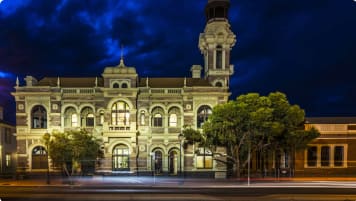Appreciating Australian River Systems
Appreciating the linking of the river network into the Australian, history, culture and landscape on a small group tour for mature and senior travellers of couples or solo travellers is an integral part of understanding the continent of Australia and Aboriginal settlement.
18 Nov 20 · 9 mins read
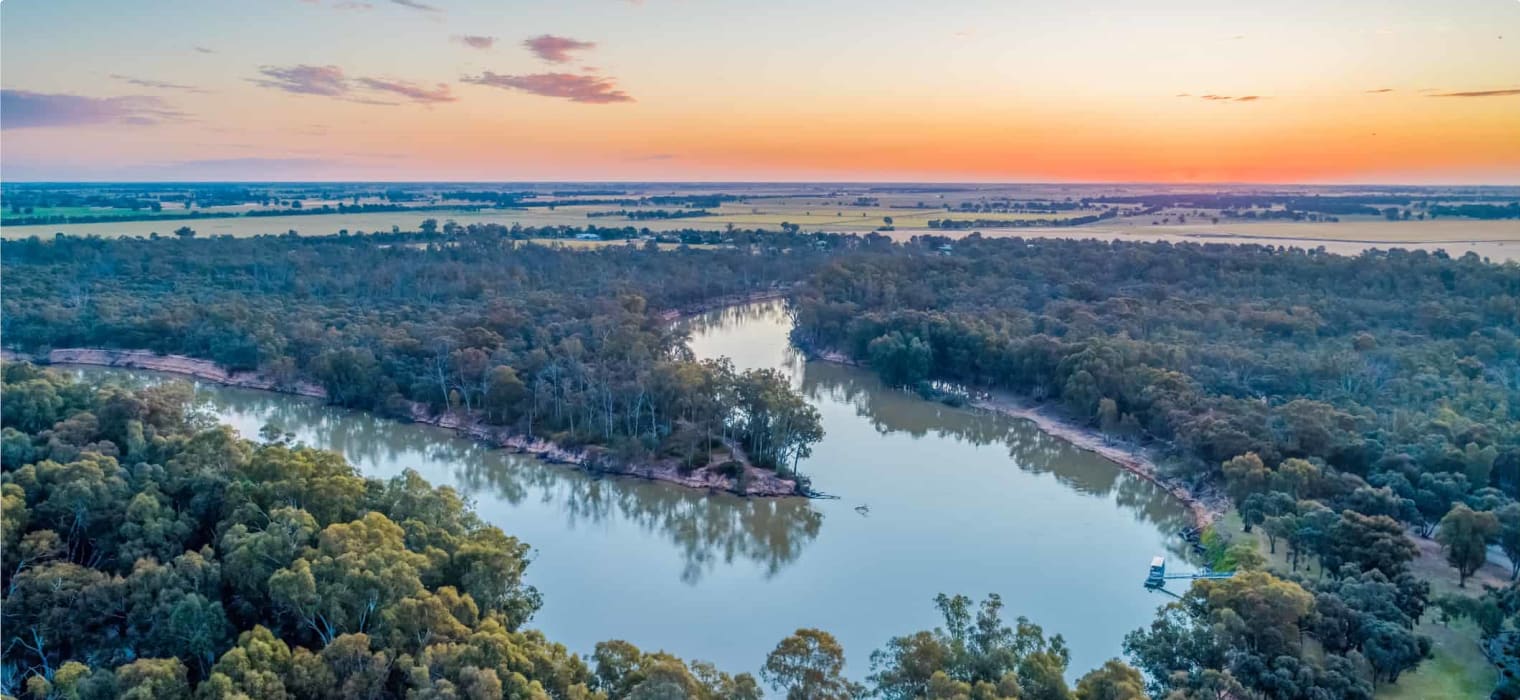
Australian Rivers
By Marco Stojanovik
Australian rivers have shaped the country from the moment the first Indigenous people arrived tens of thousands of years ago through European occupation until today. Supplying the vital ingredients of life and supporting a significant amount of biodiversity, they have also played a significant cultural and economic role, a means of transportation, and sites for play and leisure. Although Australia’s vast inland seas of some 20 million years ago may have disappeared leaving a continent that is mostly desert, numerous important waters and wetlands remain, most of which are connected by a complex network of rivers. These rivers – including the Murray, Darling, Murrumbidgee, Lachlan and many more – are all deeply entrenched in almost every aspect of human life, an irreplaceable part of the global ecosystem.
This article explores the significance of Australia’s rivers and the history of human relationship to these waterways. It is intended as background reading for a number of Odyssey Traveller’s tours to river locations such as the towns and sites along the Murray and Darling rivers, the Brewarrina fish traps on the Barwon riverbed, the stunning UNESCO World Heritage listed Franklin and Gordon rivers in Tasmania, and more.
Much of the information for this article was sourced from Ian Hoskin’s book Rivers: The Lifeblood of Australia.
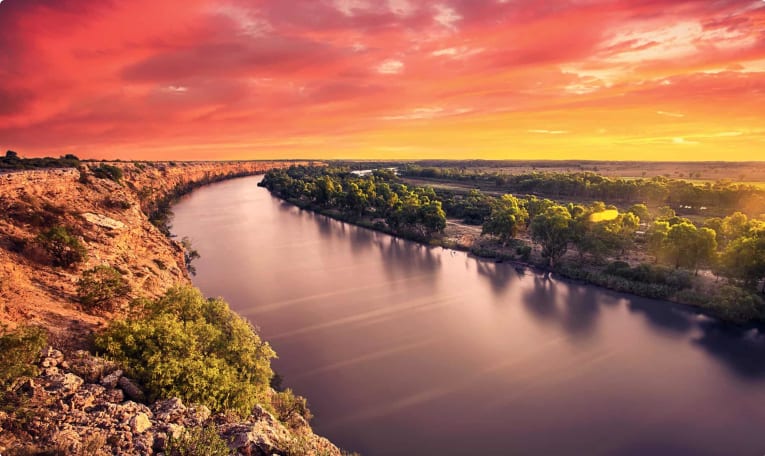
Related Tours

days
Jun, Jul, Sep, Feb, Mar +1Darwin and Kakadu small group tour
Visiting Northern Territory
Explore and learn as part of a small group tour for seniors on this package tour to Darwin and Kakadu National park, a UNESCO world heritage site. This program also visits Arnhem land. Our focus is on ecology, landscapes and history on this 14 day program in the far north of the Northern Territory.
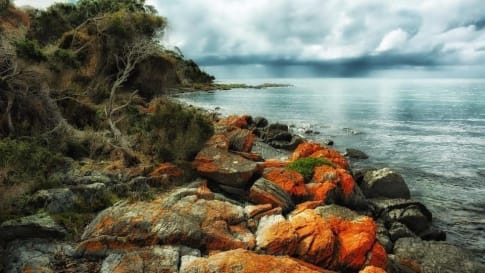
19 days
Mar, Nov, FebDiscovering Tasmania’s Wildlife
Visiting Tasmania
Small group tour of up to 15 mature and seniors travellers visiting and learning about Tasmania's wildlife and history. Visit Maria Island, Freycinet peninsula, Cradle Mountain, Strahan, Lake St Clair and Bruny Island over 16 days.
From A$11,450 AUD
View Tour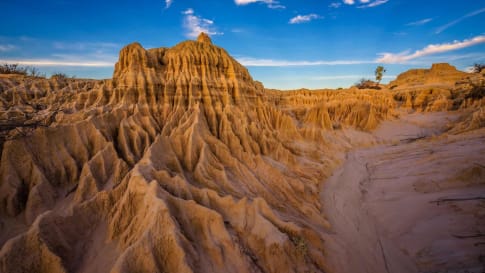
days
Mar, May, Aug, Sep, Oct +2Small group tour of World Heritage sites and more in the Southern States of Australia
Visiting New South Wales, South Australia
Discover the World Heritage Sites of the southern states of Australia travelling in a small group tour. A journey of learning around the southern edges of the Murray Darling basin and up to the upper southern part of this complex river basin north of Mildura. We start and end in Adelaide, stopping in Broken Hill, Mungo National Park and other significant locations.
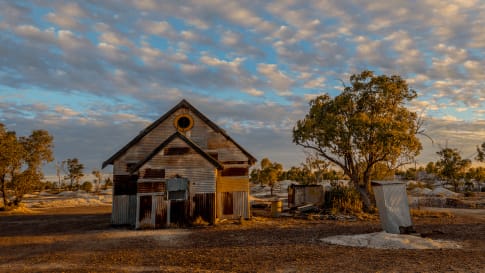
days
Mar, Apr, May, Jul, Aug +2Small group tour of outback Queensland
Visiting New South Wales, Queensland
To Dubbo and back, this small group tour takes you to learn about the Brewarrina fish traps, we travel high up into North Queensland to see the Dinosaurs of Winton and incredible Aboriginal rock art at Cathedral gorge and learn about opal mining and the history of Lightning ridge.
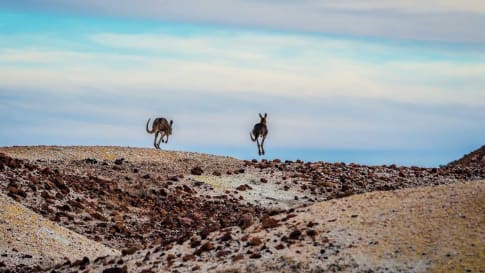
13 days
Mar, OctSmall group tour; Broken Hill and back
Visiting New South Wales, Queensland
Small group tour of New South Wales, Queensland & South Australia deserts, from Broken Hill. Learn about the history of the people who explored the deserts, from indigenous communities to Europeans, as well as Burke and Wills, visit White Cliffs, Birdsville, Maree.
From A$11,550 AUD
View Tour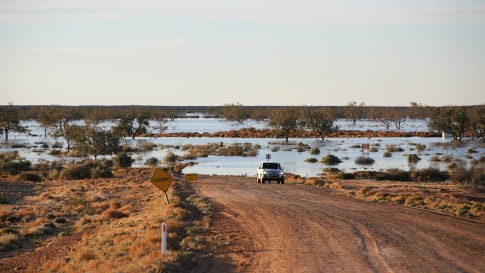
65 days
MarLong tour of Australia for a small group
Visiting New South Wales, Northern Territory
Small group tour for senior couples and solo travellers touring Australia. Travelling through the outback and visiting many of the famous sights as well as off the beaten track locations. Learn about the history of the people who explored the deserts, from indigenous communities to Europeans, as well as Burke and Wills, visit White Cliffs, Marree and far north Kakadu and the Kimberley.
From A$48,995 AUD
View TourA Vital Ingredient of Australian Life
Everything on earth can be conceptualised as being intimately connected to everything else: weather, oceans, forests, animals, and perhaps most importantly rivers. In 1835, explorer and scientist John Lhotsky referred to rivers as the ‘vascular system’ of the ‘organism of the globe’. Acting as the earth’s blue veins, capillaries, and arteries, they play a distinct role in keep nature alive, carrying lifeblood from one region to another across the earth. Their flows provide life sustaining supplies of precious, fresh, clean water and important nutrients to earth’s living organisms.
Australia – despite being the driest continent on the planet covered by 70% arid or semi-arid land – is literaly covered with water, or at least its traces. Hundreds of wetlands and waterways of various sizes exist, some of them feeding into lakes, others emptying into the seas, many petering out soon after they begin.
These provide habitat to many organisms, ranging from small, unicellular creatures to insects, vegetation, fish, amphibians, and mammals. Platypuses, turtles, frogs, ducks and more all make them their home. Other animals use them for food and drink. Meanwhile, rare and exotic species of plants and trees use them as breeding grounds, the river carrying plant stock along and thereby assisting in the spread of species. In south-eastern Australia, for example, water loving willow trees can colonise kilometres of riverbank spreading as displaced stem pieces, which take root and shoot.
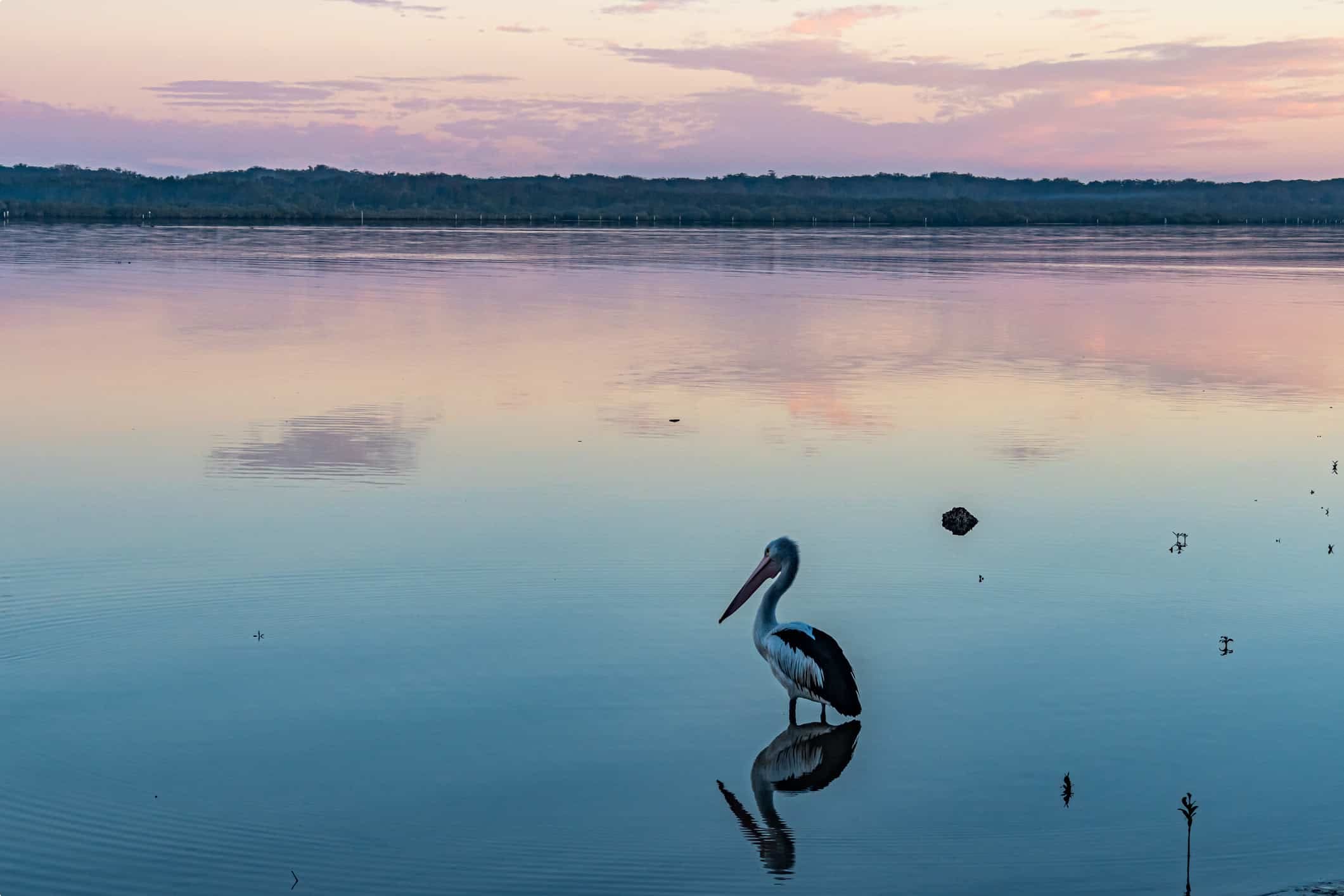
The Significance of Rivers to Indigenous Australians
Water in all its forms is intrinsically linked to the cultural and spiritual identity of Indigenous Australians. Their country encompasses water, land, sea and sky and the connections between them, not in insolation from each other but viewed holistically as one, all forming an integral part of who they are.
Dreaming stories across Australia show the connection of ancestral beings to cultural stories related to water sources. Many such stories highlight the role of spirits in creating sources of water—rivers, creeks, rock wells, lakes, lagoons, seas and springs—and the ongoing supply and control of these watercourses by ancestral spirits and creation beings.
In Western Australia‘s Kimberley Region, for example, rivers and lakes were ‘dug out’ and mountains created with the spoil by the hardworking brothers Kurukadi and Mumba, who thought the flat land they had surveyed was unsuitable for plants, animals and people. Meanwhile, the Mak Mak people of the Wagait floodplains south-west of Darwin believe that the meandering serpentine-like Finnish River was in fact created by a rainbow serpent. Similar serpents appear in stories across the continent.
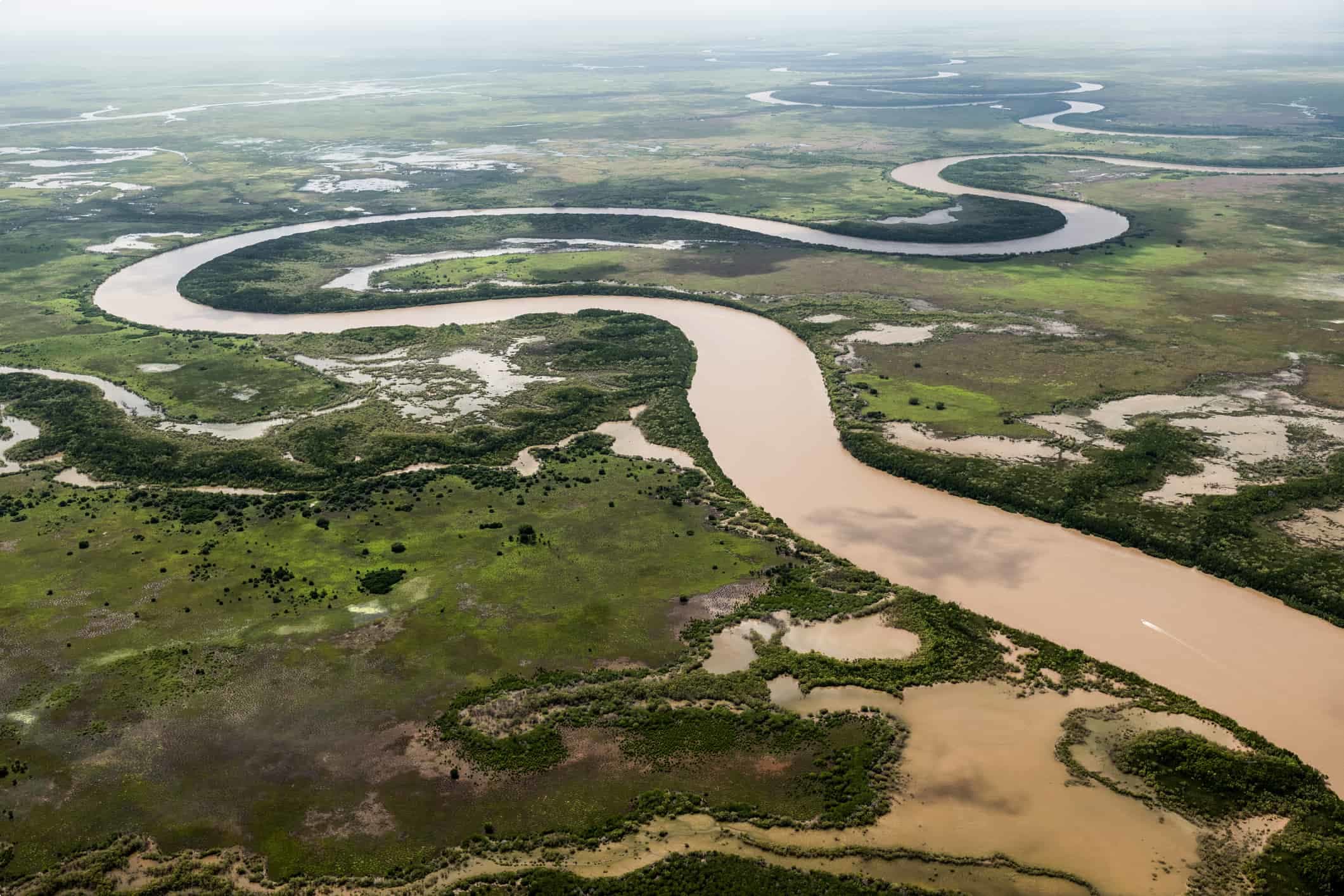
As such, for the thousands of years that Aboriginal peoples have lived in Australia, rivers have had cultural significance as ceremonial and initiation sites, gathering grounds, and as boundary markers. Plus, they have played a just as crucial role for survival, used for fishing, hunting, shelter, and harvesting medicinal plants and herbs.
Aboriginals were also willing to fundamentally change their landscape and waterways. Fish traps were constructed in streams across the country – most famously the Brewarrina stone formations of the Barwon River in NSW, widely regarded as the oldest structures of their kind in the world. And weirs and channels up to 450m long were built around the lakes and creeks of western Victoria to trap eels in the wet season and store water during dry times.
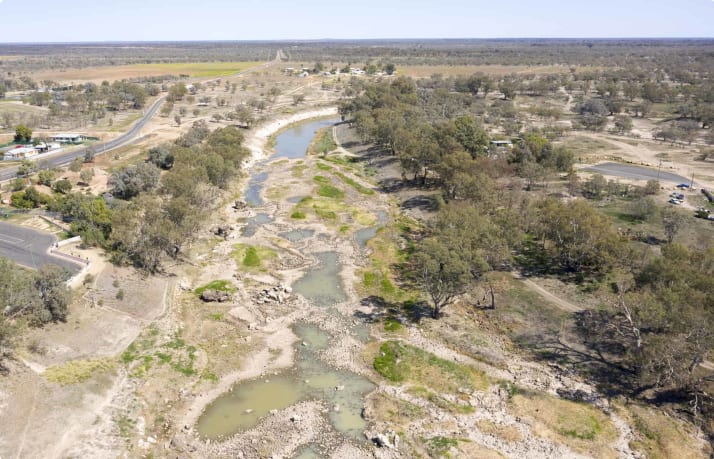
However, often indigenous people exploited waterholes and creeks without changing their hydrology. Their relationship to water was characterised by adaptation and intimate knowledge as they lived in harmony with the rivers’ cycles of flood and drought. Through years of experience, they knew the location of non-perennial creeks and waterholes, and consequently where the animals and edible plants would be found. This approach contrasted the hope and defiance that came later with the arrival of the Europeans.
European Occupation
Once the British arrived in Australia, one of their main priorities was finding sites for further expansion. Surveyors and adventurers recorded the landscape around the primary settlements searching for locations with fresh water vital for their crops and livestock. First, from 1788, occupation quickly spread out along the rivers and creeks around Sydney, particularly along the Hawkesbury and Nepean rivers. Then explorers continued to search further for inland rivers that might sustain farms and serve as navigation routes to yet more useful country.
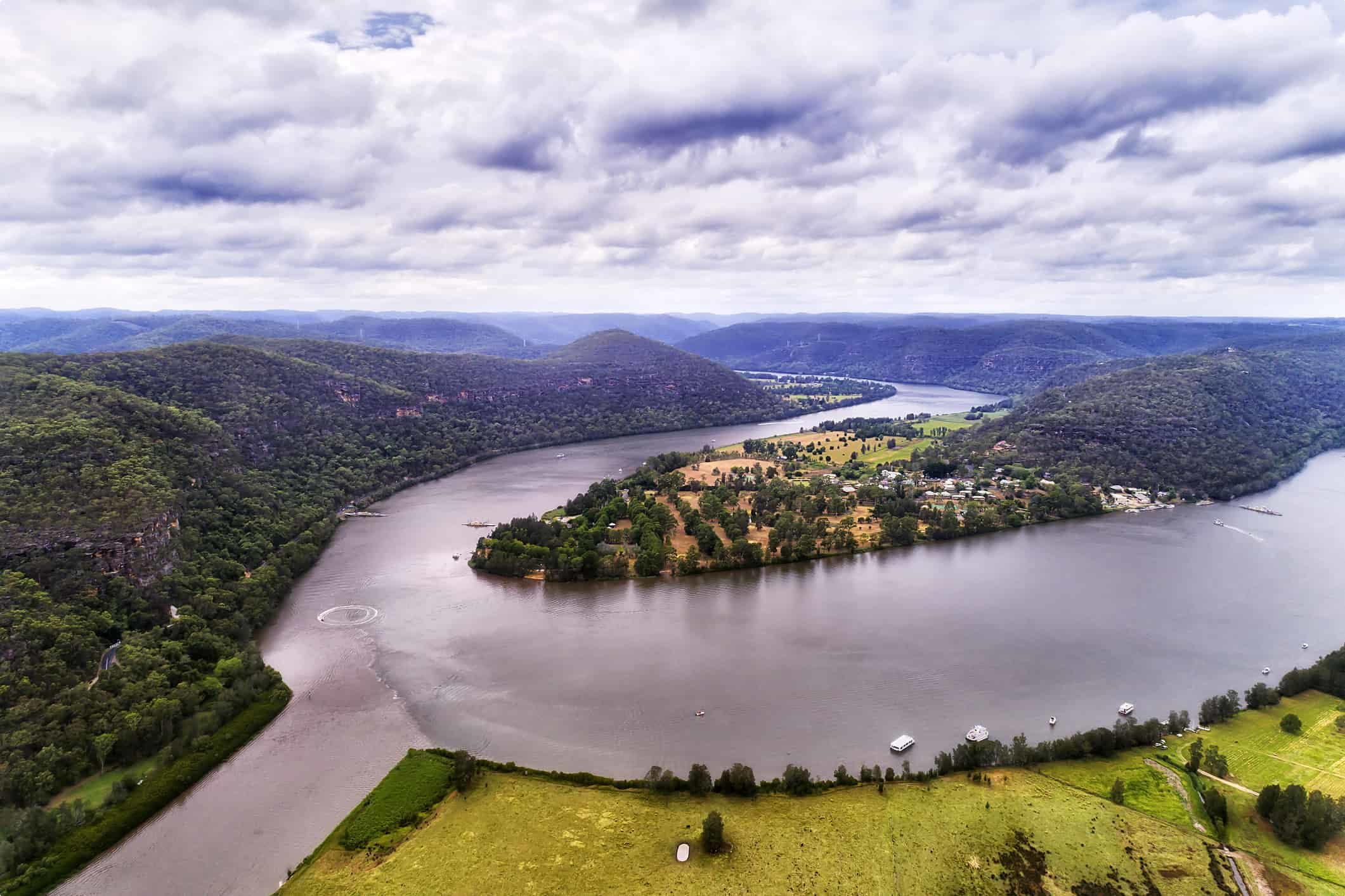
In this way the rivers guided and sustained the spread of Europeans, giving settlers access to the land beyond the immediate coastlines, shaping the modern cities we know today. Besides ease of access, settlement on rivers was the sensible choice providing drinking water, irrigation for kitchen gardens, and a sewer system. The waterways also proved to be a vital transport system of people and goods in comparison to overland routes that were rough and slow.
As the Europeans moved into the choicest areas, they did so with little consideration if the impact on Indigenous land practices. Conflict quickly arose between them and displaced Aboriginal communities with lives lost on both sides.
In the early 1800s, for example, after the Wiradjuri people, unaware of the implications of their generosity, showed European adventurers where to find good water and places to camp, colonists soon returned with stock and the intention to stay. Violence erupted – one part of what has been called the Hundred Years War between the Wiradjuri and the invaders. The war in that part of the colony was over by 1841; but the name Murdering Island, which appeared in early maps, was testament to the slaughter of the Murrumbidgee.
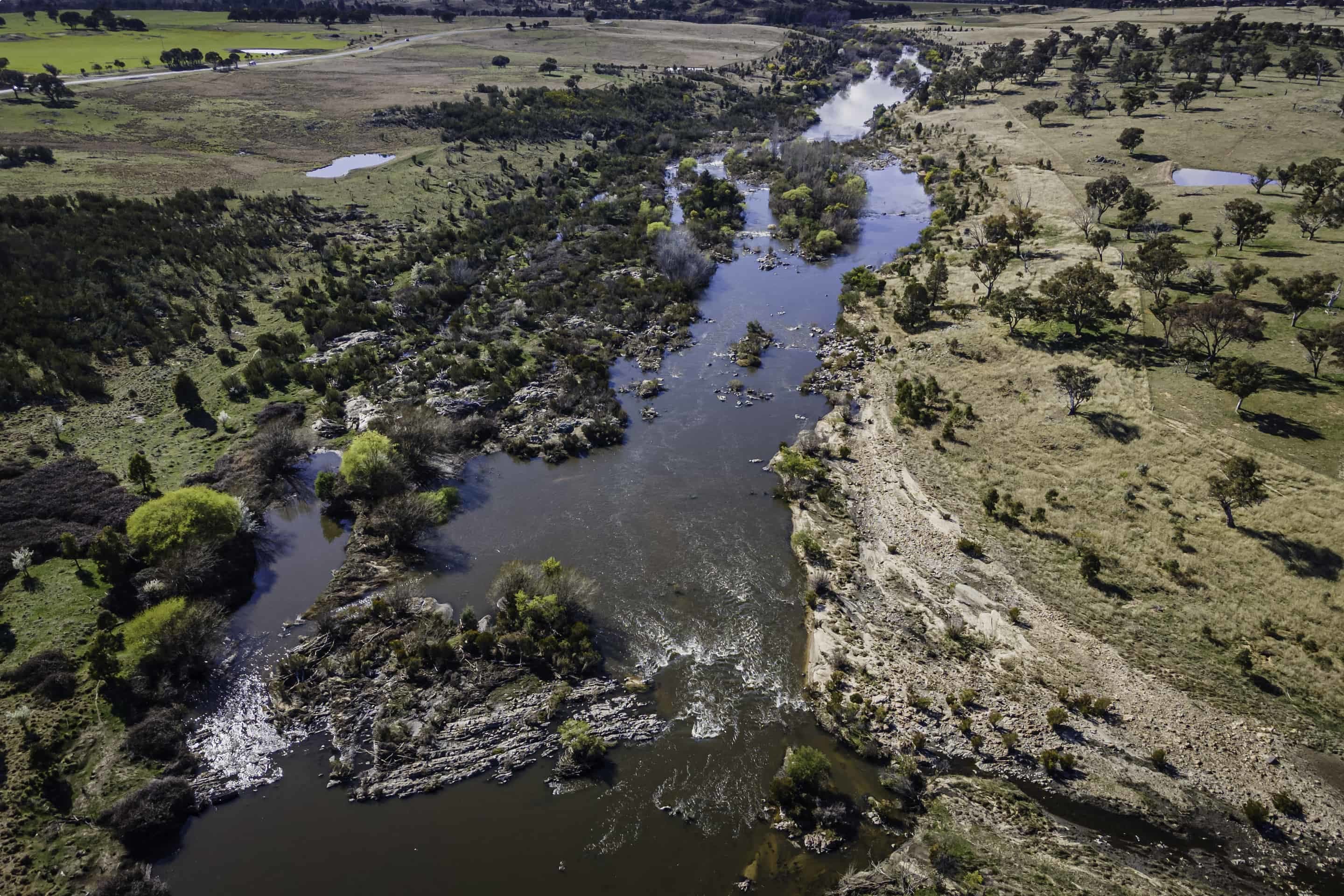
Economies of the Rivers
Australia as a nation could not exist without taking water out of the natural environment and using it for domestic and productive purposes. Since European occupation until today, Australia’s rivers have continually been vital for many economic processes. Water from rivers is diverted to be used in towns and cities for domestic uses, in agricultural, mining and manufacturing industries, and for hydro-electric power generation.
This water is particularly vital for Australia’s agriculture with cotton, rice, wheat, fruit, and vegetables all dependent upon irrigation. Although rainfall provides much of the water to the nation’s agriculture, when it is not sufficient, irrigation is necessary. By far the biggest consumer of Australia’s freshwater resources, it accounts to 68% of all water used.
Two-thirds of that comes from rivers within the Murray Darling basin, known as Australia’s great food bowl. Here, regulation through weirs and locks, pipes and pumps is so pervasive that the writer Don Watson has described them as ‘part rivers and part machines’.
Major economic and social benefits accrue to Australia from irrigated agriculture. Without irrigation, a significant proportion of Australia’s agricultural industries would either not exist or would be greatly diminished. Towns and industries that rely on these enterprises would contract or disappear.
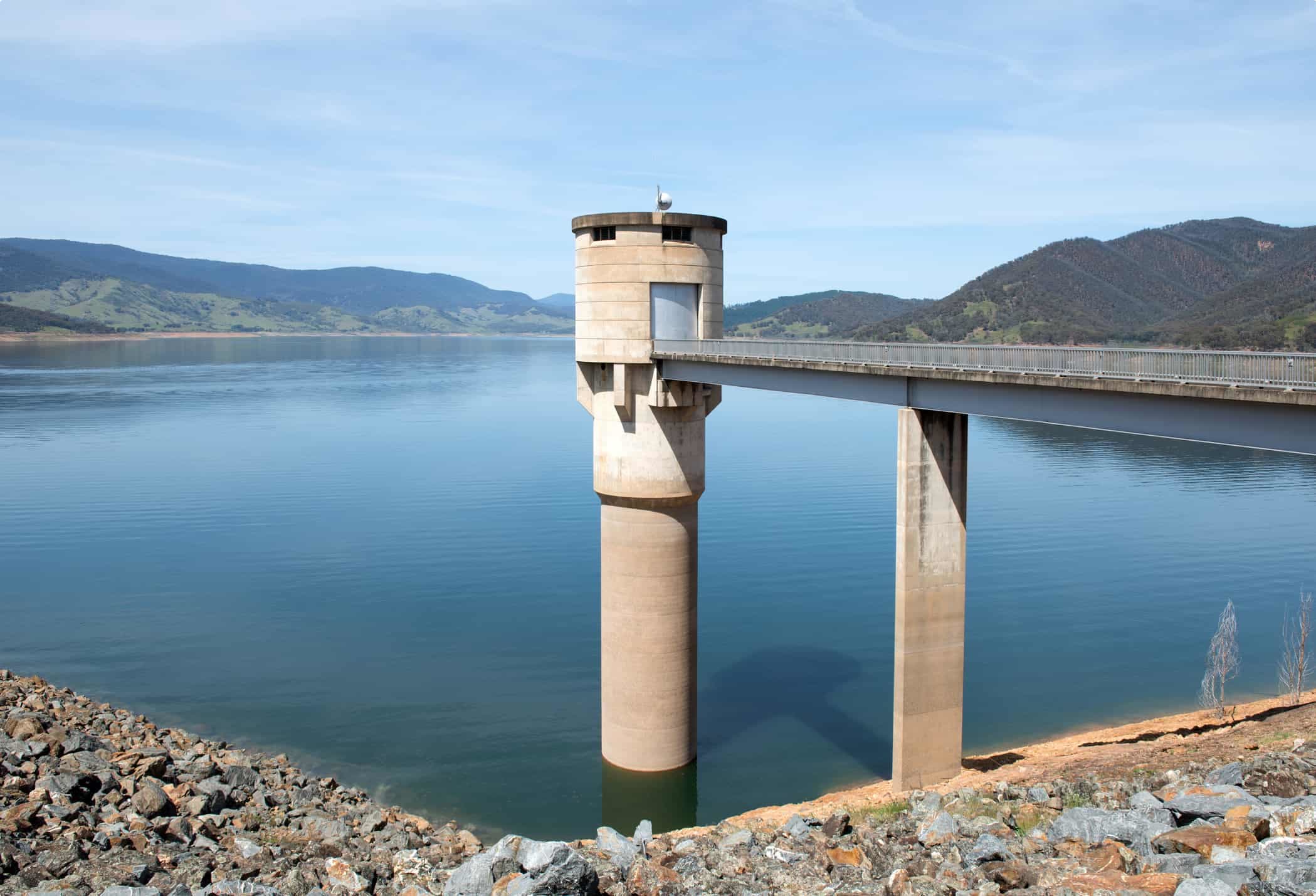
Transport along the rivers has also been vital for Australia’s trade and economy and a life source for many of the country’s historic towns. Bourke, Brewarrina and other centres along the Darling River, for example, grew to prominence as vital transport nodes linking outback agricultural industries with the east coast trade routes in the 19th century.
Bourke particularly benefited as its port soon became the focus of the world’s wool industry with wool from across western NSW and south western Queensland transported in by bullock wagons. The wool was then shipped via paddle steamers from Bourke’s port down the Darling to the Murray River to South Australia and onto Adelaide to then be shipped around the world. As several transportation industries flocked to the town to set up branches it quickly became the trade centre of outback NSW.
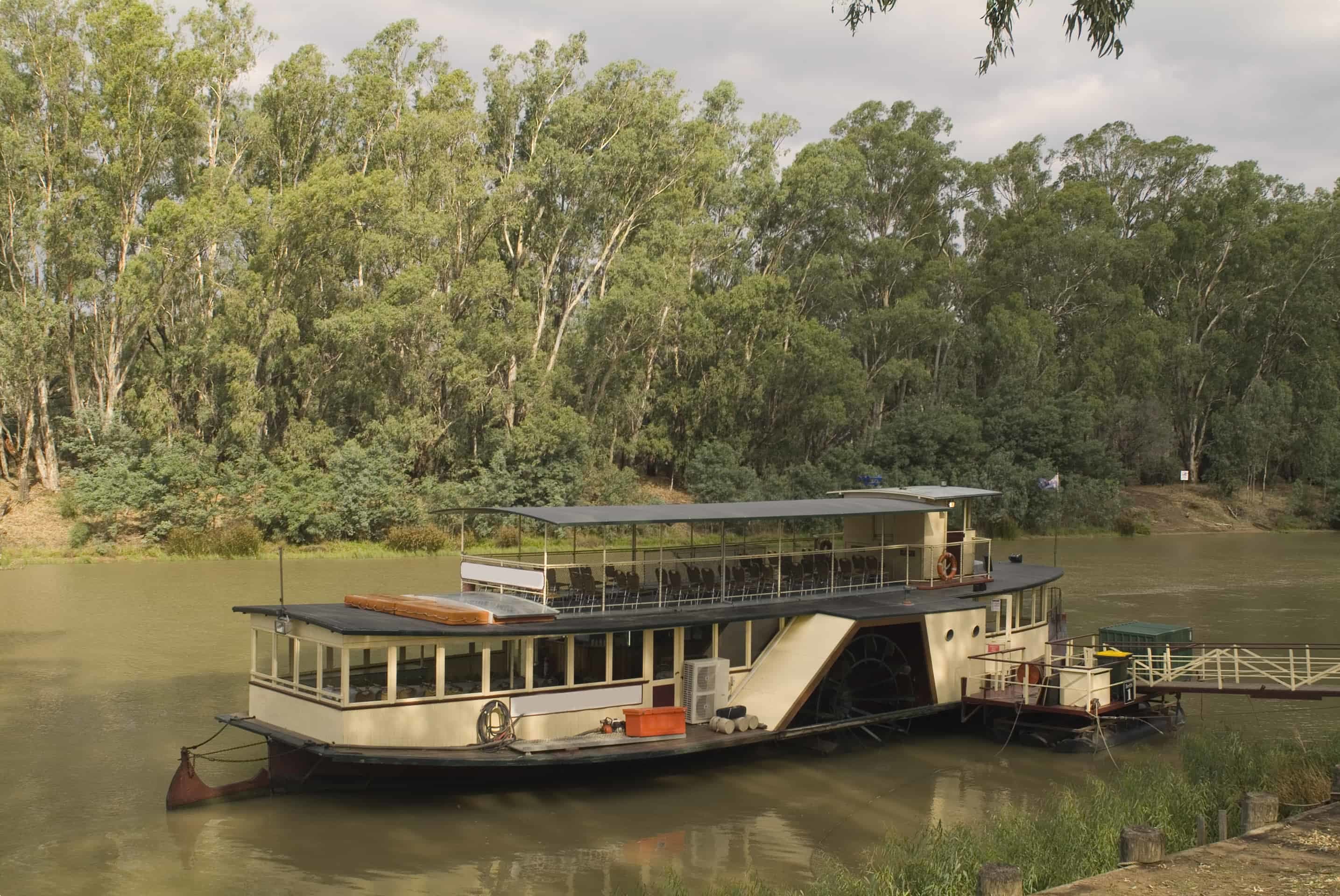
Pressures on the Rivers
With the many uses of Australia’s rivers’ waters, it comes as no surprise that the country’s per capita water consumption is high. Per person, we use more than all other countries of the Organisation for Economic Cooperation and Development except New Zealand, Canada and the United States. Meanwhile, the non-Indigenous attempts to physically control water flow in the last 230 years has had various unintended consequences: salination, damaged ecological conditions and dependent ecosystems, and inequity of water access.
Many have thus recently begun advocating for a sustainable approach to water use, a fundamental shift of thinking to live with the landscape instead of fighting against it and trying to control it. Reflecting on this, Ian Hoskins explains: “It is a call of sort for a contemporary form of the ‘inside knowledge’ that sustained Aboriginal people for eons – an indication, perhaps, that Western and Indigenous holistic approaches to the natural world are converging.”
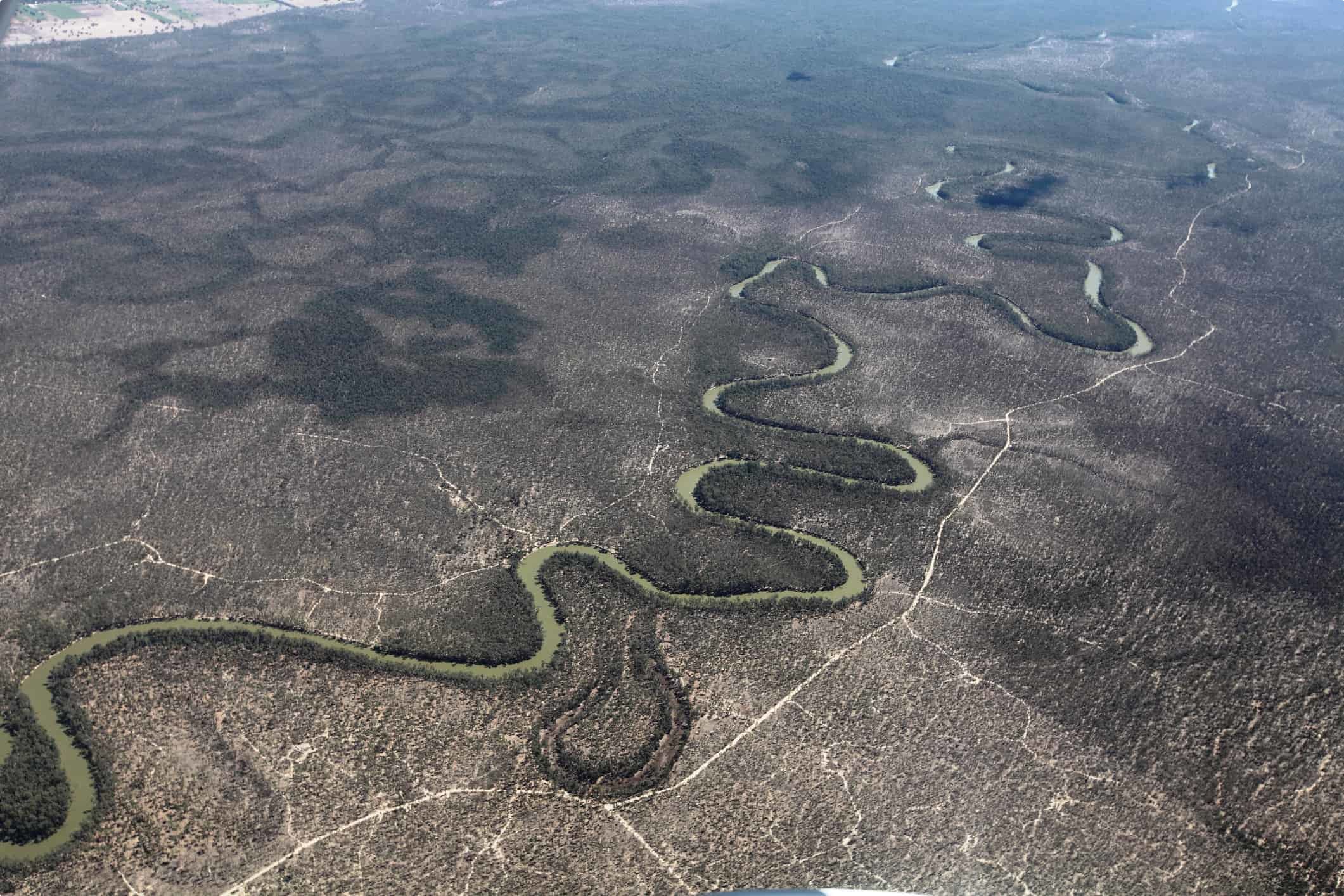
Tour of Australian Rivers
Odyssey Traveller visits Australian river locations during several of our Australian tours.
- During our small group tour of Western New South Wales we travel for 14 days from Dubbo around the Southern edges of the Murray Darling basin and up to the upper southern part of this complex river basin north of Mildura, before heading back East towards Dubbo via Griffith. Gain an understanding and appreciation of the complexity and features of the Murray Darling Basin through some spectacular scenery. Whilst the Murray-Darling begins in Queensland, by the time the river system reaches New South Wales it represents one the most complex river systems in Australia against which modern agriculture has placed substantial stress.
- You can also visit the heritage-listed traditional Aboriginal fish traps at Brewarrina situated on the Barwon River as part of our 14 day guided tour of Outback Queensland. The Brewarrina fish traps consist of an elaborate network of rock weirs and pools arranged in an intricate way that allowed fish to be herded and caught during both high and low river flows. Stretching for nearly half a kilometre along the Barwon riverbed just below the Queensland border in north-west New South Wales, they are the largest group recorded in Australia.
- Or visit the Franklin-Gordon Wild Rivers as part of our 16-day Discovering Tasmania’s Wildlife tour. The Franklin-Gordon Wild Rivers National Park preserves the catchments of the Franklin, Olga and Gordon rivers, and is as rugged and wild as its name suggests. The rugged landscape was carved by ancient glaciers, forming the many creeks that twist through steep rock gorges on their way to forming the powerful Franklin and Gordon rivers. Located in the wettest part of Tasmania – with an annual rainfall of over 1900mm – the park supports a range of flora, including 3000-year-old Huon pines, wet temperate rainforest, and eucalypt forest. These form habitats for a wide variety of native animals, including the Tasmanian devil, spotted-tail quoll and eastern quoll.
These and numerous other rivers are visited across Odyssey Traveller’s Australian tours. We have been serving global travellers since 1983 with educational tours of the history, culture, and architecture of our destinations designed for mature and senior travellers. We specialise in offering small group tours partnering with a local tour guide at each destination to provide a relaxed and comfortable pace and atmosphere that sets us apart from larger tour groups. Tours consist of small groups of between 6 and 12 people and are cost inclusive of all entrances, tipping and majority of meals. For more information, click here, and head to this page to make a booking.
Articles about Australia published by Odyssey Traveller:
- The Kimberley: A Definitive Guide
- Halls Creek
- Lake Argyle
- Purnululu National Park
- Strahan and Gordon River
- South and East Alligator Rivers
- Franklin River, Tasmania
For all the articles Odyssey Traveller has published for mature aged and senior travellers, click through on this link.



